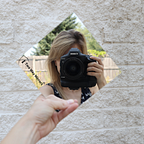The Glass That Protects the Mona Lisa
Multi-million dollar art doesn’t seem like it would have anything in common with a retail store or a recording studio — but it surprisingly does
Going about your daily life, you probably don’t notice small details of the things around you.
Picture this: you’re window shopping. It’s a casual weekend and you’re perusing in your local mall. You see a killer outfit in the window of your favorite store, so you stand and admire it, pondering if you should actually walk in there and buy it.
The reason you’re able to do this is because of anti-reflective glass!
Anti-reflective glass, also known as AR glass or museum glass, is optically coated on one or two sides to get rid of reflections while also increasing the light transmission. Regular glass is about 8% reflective, while AR glass is less than 1% reflective. This basically means that you won’t see as much of a glare, which makes it easier for you to see through.
One of the biggest perks of this glass in my opinion is that it blocks 99% of UV light! It also has a low iron substrate which simply means that it won’t give you the weird green tint that a standard glass would. This is why it’s the most popular choice to put over a painting — it’s not going to distort the color at all and it’ll keep it safe from sun rays.
This all sounds pretty interesting, but it gets even cooler once you know the scientific properties behind the glass.
The AR coating on the glass is a really thin, hard film that gets put on in layers. The AR coating has an index refraction that measures somewhere between air and glass. An index refraction is just a measurement of how fast light travels through a material.
To break that down even further: the intensity of the light reflected from the inner surface and the light reflected from the outer surface is pretty much the same. This balance is what cancels out the reflection, which is a process called destructive interference.
AR Glass Uses
With anti-reflective glass having so many strong qualities, the uses are actually pretty broad! We’ve already discussed storefronts, but where else can you find AR glass?
Museums
For obvious reasons, it’s ideal to have a glass that doesn’t give off a harsh reflection so people can see the artwork displayed in museums clearly. However, another huge appeal to AR glass for museums is the UV protection.
We all know of the Mona Lisa, quite possibly Leonardo Divinci’s most popularly known piece. This painting is one of the most highly insured pieces of artwork to date, sitting at roughly $850 million. This being said, it’s a painting that needs to be protected at all costs.
Over time, UV rays start to affect things. If sunlight is pouring through your window on a daily basis, it can permanently change the color of furniture, carpet, etc. With paintings, this is no different. Paintings such as the Mona Lisa are very fragile due to the aging they’ve endured. Just as it does with furniture, sunlight can taint the true color of beautiful artwork, or even permanently ruin it.
Paintings can be restored, but there is always a risk during that process — the original paint could come off. Because of this, it’s best to take all precautionary measures to prevent the painting from harm. In the case of the Mona Lisa, not only is the glass UV protected, but it is also bulletproof. The famously known painting was stolen in 1911, so to keep tragedies such as this happening again, the painting is under constant lockdown.
Recording Studios
You would think that soundproof glass would be the main component of a recording studio, and you’re not wrong. However, they will often opt to use soundproof glass with an AR coating on it. When the talent is recording a new song, they need to focus on one thing — the music.
Minimizing distractions such as reflections helps the talent stay in their zone! It’s also extremely useful when there’s a raw, uncut version of a music video being recorded. Things like the glare on the glass can be edited out in post-processing, but it makes it easier to eliminate it from the get-go.
Teleprompters
Teleprompters are a bit of a different story. They’re not simply anti-reflective glass, they’re beamsplitter glass. This is a special tinted glass that includes an AR coating on the backside. The AR coating helps to prevent ghosting text/double image, so it’s easier for the presenter to read. It allows for a smooth presentation without awkward squinting or mistakes.
Anti-Reflective vs. Anti-Glare
A lot of people think that anti-reflective glass and anti-glare glass are the same. They’re pretty similar, but they also have some differences! Anti-glare glass is only protecting against external sources of light. A lot of times there can be a small visible difference too. AR glass is going to be clear, normal textured glass. But anti-glare glass tends to have a slight matte finish to it.
In installations that require an air gap on both sides, the anti-reflective glass will look the best. Anti-glare can be great for paintings if you are able to push the glass right up against the painting. If it isn’t directly touching the painting, the painting will appear fuzzy. This is because the anti-glare glass is diffusing particles on the surface facing the “air”. It smooths out the reflections caused by lighting while keeping the painting itself looking crisp!
